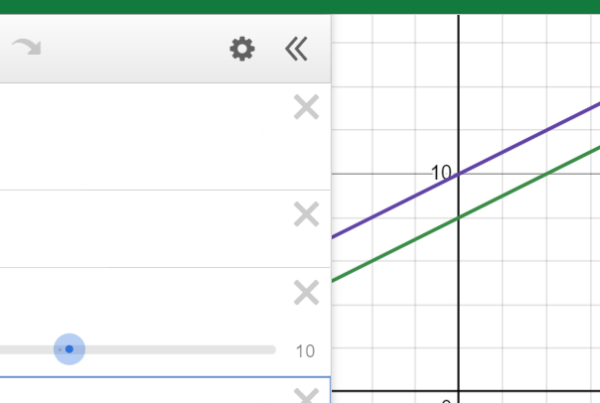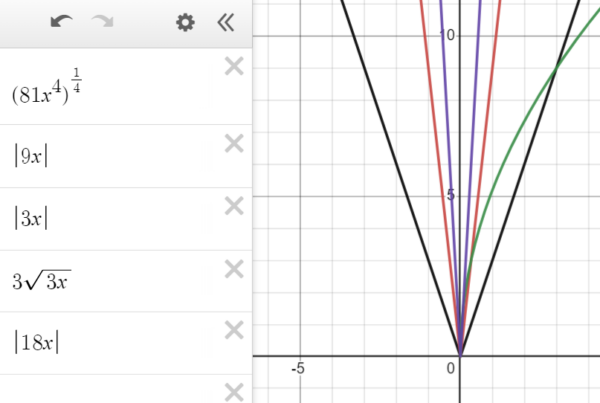Introduction
Inequality problems can become much easier when we use the SAT Desmos widget. Understanding how the equations translate into graphs can help us boost our confidence in our answers on the test.
Before diving in, make sure to check out the previous blogs in this series:
Inequalities might not get as much attention as equations, but they’re an important part of the SAT math section. Instead of looking for one exact answer, these problems ask you to find a range of possible solutions. You’ll see different types, like linear inequalities, systems of inequalities, and inequality word problems. The good news? Once you know the rules, they’re not too bad! In this post, we’ll break down the main types of inequalities on the SAT and share some tips to solve them quickly and easily.
Types of Inequality Problems:
1. Single Inequality: Asks you to find the (x,y) coordinate pair(s) that satisfies the inequality
2. System of inequalities: Asks you to find the (x,y) coordinate pair(s) solution to the system
3. Inequality word problems: Provides a situation and asks you to create inequalities that satisfy the conditions in context
Important Vocabulary:
Solution: Any points that are in the shaded region for a single inequality, or a double shaded region for a system of inequalities
xy-plane: A fancy way to describe the x-y axis the graph is on
Dotted Line: Points on the line do not satisfy the inequality
Solid Line: Points on the line do satisfy the inequality
Single Inequality:
For this type of inequality problem, we need to find make sure the points, or solutions, are in the shaded region of the inequality.
-
- Type the inequality into Desmos
- Type the points into Desmos
- The point in the shaded region is your solution
Example 1:
Step 1: Graph the inequality in Desmos.
Step 2: Graph the points in Desmos.
Step 3: Only one of the four points, answer choice A, is in the shaded region. So, A is our solution.
System of Inequalities:
For this type of problem, we need to make sure that the points (solutions) are in the double shaded region of the system of inequalities.
-
- Graph the inequalities
- Graph the points
- The point(s) in the double shaded region is your solution
Example 2:
Step 1: Graph the inequalities.
Step 2: Graph the points.
Step 3: Only point D is in the double shaded region – where the two shaded regions overlap. So, answer choice D is the correct answer.
Inequality Word Problems:
For inequality word problems, we need to carefully create equations based on the context, then use the graph to interpret the solution.
-
- Clearly identify your variables
- Create inequalities using those variables & graph them
- Use the graph to answer the question being asked
Example 3:
Step 1: Identify your variables:
This problem lists 100-pound packages and 120-pound packages. So, I will create variables for the number of packages:
x = number of 100-pound packages
y = number of 120-pound packages
Step 2: Create equations and graph them
Since the minimum number of packages is 10, we know that the sum of the number of each type of package (x + y) has to be greater than or equal to 10, so:
x + y >= 10
Because the maximum weight of packages is 1100, we know that the total weight of x 100-pound packages (100x) plus the total weight of y 120-pound packages (120y) has to be less than or equal to 1100, so:
100x + 120y <= 1100
Now, we’ll graph these in Desmos:
Step 3: Use the graph to answer the question.
The question is asking us to find the maximum number of 120-pound packages, or the maximum value of y (this is why it’s important to clearly define our variables).
Looking at the graph, the largest y-value is at the intersection point, making our answer 5, or answer choice C.
Now it’s your turn!
Here are some practice problems for you to try out!
1.
2.
3.
4.
5.
6.
Conclusion
Practicing these problems using the Desmos trick will help you become more comfortable with inequality problems. Keep practicing, and you’ll master this skill in no time!
Answers:
1. D
2. D
3. B
4. C
5. A
6. 4
Interested in learning more about Test Prep at Mindfish?
Contact us today to find out what our dedicated tutors can help you achieve.





